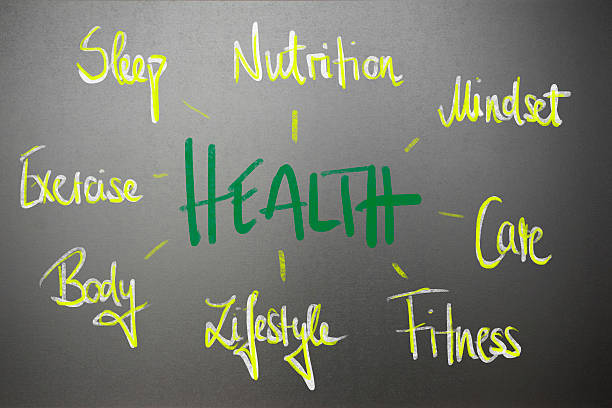Living a healthy way is one of the best things you can do for yourself and your loved ones. It can help you prevent or manage many chronic diseases, improve your physical and mental well-being, and enhance your quality of life. But what does it mean to live a healthy way? And how can you achieve it?
In this blog post, we will explore the concept of a healthy way of living and share some practical tips and advice on how to eat, exercise, sleep, and manage stress in a healthy way.
Whether you are just starting your healthy living journey or looking for some new ideas and motivation, this blog post is for you. By the end of it, you will have a better understanding of what a healthy way of living entails and how you can incorporate it into your daily routine.
Key Takeaways:
- A healthy way of living is a lifestyle that promotes your health and well-being by taking care of your nutrition, physical activity, sleep, and stress levels.
- Living a healthy way can have many benefits for your body and mind, such as reducing the risk of various diseases, boosting your energy, mood, and productivity, and improving your self-esteem and happiness.
- To live a healthy way, you need to follow some general guidelines and recommendations on how to choose nutritious and balanced foods, engage in regular and moderate exercise, get enough quality sleep, and cope with stress effectively.
- In this blog post, we will give you some tips and examples on how to eat, exercise, sleep, and manage stress in a healthy way.
What is a healthy way of living?

A healthy way of living is a lifestyle that supports your physical and mental health by taking care of four main aspects: nutrition, physical activity, sleep, and stress management. These aspects are interconnected and influence each other, so you need to find a balance that suits your individual needs and preferences.
Nutrition
Nutrition is the process of providing your body with the essential nutrients it needs to function properly and prevent diseases.
A healthy way of eating involves choosing foods that are rich in vitamins, minerals, antioxidants, fiber, protein, healthy fats, and complex carbohydrates, and avoiding or limiting foods that are high in sugar, salt, saturated and trans fats, and processed ingredients. Some of the benefits of eating a healthy way are:

- Maintaining a healthy weight and preventing obesity
- Lowering the risk of cardiovascular diseases, diabetes, cancer, and other chronic conditions
- Improving your digestion, immunity, and skin health
- Enhancing your mood, memory, and cognitive performance
To eat a healthy way, you need to follow some general guidelines and recommendations that are based on scientific evidence and expert advice. One of the most widely used and accepted models is the Healthy Eating Plate, developed by Harvard School of Public Health and Harvard Medical School.
The Healthy Eating Plate shows the proportions and types of foods that you should eat for each meal and also provides some tips and examples of healthy choices.
Here is a summary of the Healthy Eating Plates:
| Food group | Proportion | Examples | Tips |
|---|---|---|---|
| Vegetables | Half of your plate | Broccoli, carrots, spinach, kale, tomatoes, etc. | Choose a variety of colors and types, and eat more dark green, leafy, and cruciferous vegetables. Avoid potatoes and other starchy vegetables. |
| Fruits | A quarter of your plate | Apples, bananas, berries, oranges, grapes, etc. | Choose a variety of colors and types, and eat more whole fruits than juices. Limit dried fruits and canned fruits with added sugar. |
| Whole grains | A quarter of your plate | Brown rice, oatmeal, quinoa, whole wheat bread, etc. | Choose whole grains over refined grains, and limit white rice, white bread, and pastries. |
| Healthy protein | Food Group | Fish, poultry, eggs, beans, nuts, seeds, etc. | Choose lean and plant-based protein sources over red meat and processed meat. Limit cheese and dairy products. |
| Healthy oils | Moderate amount | Olive oil, canola oil, peanut oil, etc. | Use healthy oils for cooking, dressing, and dipping, and avoid butter, margarine, and tropical oils. |
| Water | Plenty | Plain water, tea, coffee, etc. | Drink water or other unsweetened beverages, and limit milk, juice, and alcohol. |
Physical activity
Physical activity is any movement that makes your muscles work and burns calories. A healthy way of exercising involves engaging in moderate to vigorous physical activities that raise your heart rate, strengthen your muscles and bones, and improve your flexibility and balance. Some of the benefits of exercising a healthy way are:

- Reducing the risk of cardiovascular diseases, diabetes, osteoporosis, and some cancers
- Boosting your energy, endurance, and metabolism
- Improving your mood, self-esteem, and mental health
- Preventing or relieving pain, stiffness, and inflammation
To exercise a healthy way, you need to follow some general guidelines and recommendations that are based on scientific evidence and expert advice. One of the most widely used and accepted models is the [Physical Activity Guidelines for Americans], developed by the U.S. Department of Health and Human Services.
The Physical Activity Guidelines for Americans show the types and amounts of physical activities that you should do for each age group, and also provide some tips and examples of physical activities that you can do. Here is a summary of the Physical Activity Guidelines for Americans:
| Age group | Types of physical activities | Amounts of physical activities | Tips |
|---|---|---|---|
| Children and adolescents (6-17 years) | Aerobic, muscle-strengthening, and bone-strengthening activities | At least 60 minutes of moderate to vigorous physical activity every day, including at least 3 days of muscle-strengthening and bone-strengthening activities per week | Choose activities that are fun and appropriate for their age and abilities, such as running, jumping, playing, swimming, biking, etc. |
| Adults (18-64 years) | Aerobic and muscle-strengthening activities | At least 150 minutes of moderate or 75 minutes of vigorous aerobic activity per week, and at least 2 days of muscle-strengthening activity per week | Choose activities that suit your preferences and goals, such as walking, jogging, dancing, lifting weights, yoga, etc. |
| Older adults (65 years and older) | Aerobic and muscle-strengthening activities | Same as adults, but also include balance training and consult with a health care provider before starting a new physical activity program | Choose activities that are safe and comfortable for their health and fitness level, such as gardening, tai chi, water aerobics, etc. |
Sleep

Sleep is the state of rest and recovery that your body and mind need to function optimally. A healthy way of sleeping involves getting enough quality sleep that follows your natural circadian rhythm, which is the internal clock that regulates your sleep-wake cycle. Some of the benefits of sleeping a healthy way are:
- Repairing and rejuvenating your cells, tissues, and organs
- Consolidating and enhancing your memory and learning
- Regulating your hormones, appetite, and blood sugar
- Improving your mood, alertness, and creativity
To sleep a healthy way, you need to follow some general guidelines and recommendations that are based on scientific evidence and expert advice. One of the most widely used and accepted models is the [National Sleep Foundation’s Sleep Recommendations], developed by a panel of experts from various fields of sleep medicine and research.
READ ALSO : How To Biohack Your Sleep: 10 Tips To Sleep Better And Feel Amazing
The National Sleep Foundation’s Sleep Recommendations show the optimal and appropriate range of sleep duration for each age group and also provide some tips and examples of good sleep habits that you can adopt.
Here is a summary of the National Sleep Foundation’s Sleep Recommendations:
| Age group | Optimal sleep duration | Appropriate sleep duration | Tips |
|---|---|---|---|
| Newborns (0-3 months) | 14-17 hours | 11-19 hours | Establish a regular sleep schedule and routine, and avoid overstimulation before bedtime. |
| Infants (4-11 months) | 12-15 hours | 10-18 hours | Develop a consistent bedtime ritual, such as reading, singing, or cuddling, and create a comfortable and dark sleeping environment. |
| Toddlers (1-2 years) | 11-14 hours | 9-16 hours | Encourage daytime naps, limit screen time and caffeine intake, and provide a security object, such as a blanket or a toy, if needed. |
| Preschoolers (3-5 years) | 10-13 hours | 8-14 hours | Set a regular bedtime and wake-up time, and avoid scary or exciting activities or stories before bed. |
| School-aged children (6-13 years) | 9-11 hours | 7-12 hours | Promote physical activity and healthy eating during the day, and avoid homework, video games, or phone calls at night. |
| Teenagers (14-17 years) | 8-10 hours | 7-11 hours | Adjust the sleep schedule to match the school schedule, and avoid late-night socializing, texting, or web surfing. |
| Young adults (18-25 years) | 7-9 hours | 6-11 hours | Manage the academic and social demands, and avoid alcohol, nicotine, and caffeine before bed. |
| Adults (26-64 years) | 7-9 hours | 6-10 hours | Maintain a regular sleep pattern, and avoid heavy meals, bright lights, and noises at night. |
| Older adults (65 years and older) | 7-8 hours | 5-9 hours | Address any medical or psychological issues that may affect sleep quality, and avoid napping too much during the day. |
Stress management
Stress management is the process of identifying and reducing the sources of stress in your life, and developing positive and effective ways to cope with stress when it occurs.

A healthy way of managing stress involves recognizing the signs and symptoms of stress, finding the root causes of stress, and applying some strategies and techniques to deal with stress. Some of the benefits of managing stress in a healthy way are:
- Lowering your blood pressure, heart rate, and cortisol levels
- Improving your immune system and reducing inflammation
- Enhancing your emotional intelligence and resilience
- Increasing your happiness and satisfaction
To manage stress in a healthy way, you need to follow some general guidelines and recommendations that are based on scientific evidence and expert advice. One of the most widely used and accepted models is the [Stress Management Pyramid], developed by the American Institute of Stress.
The Stress Management Pyramid shows the four levels of stress management, from the most basic to the most advanced, and also provides some tips and examples of stress management techniques that you can use. Here is a summary of the Stress Management Pyramid:
| Level | Description | Examples | Tips |
|---|---|---|---|
| Level 1: Avoid unnecessary stress | Eliminate or minimize the sources of stress that are not essential or beneficial for your life | Learn to say no, avoid people who stress you out, limit your exposure to news and social media, etc. | Identify the stressors that you can control and change, and let go of the ones that you cannot. |
| Level 2: Alter the situation | Change or modify the sources of stress that are important or unavoidable for your life | Express your feelings, communicate your needs, negotiate your expectations, manage your time, etc. | Be assertive and respectful, and do not bottle up your emotions or compromise your values. |
| Level 3: Adapt to the stressor | Adjust or reframe your attitude and perspective towards the sources of stress that are challenging or inevitable for your life | Look for the positive, practice gratitude, set realistic goals, accept the things you cannot change, etc. | Be optimistic and flexible, and do not take things personally or dwell on the past. |
| Level 4: Accept and cope with the stressor | Accept and deal with the sources of stress that are chronic or traumatic for your life | Seek support, talk to someone, join a support group, seek professional help, etc. | Be compassionate and forgiving, and do not isolate yourself or blame yourself or others. |
Setting Health Goals
One of the key steps to living a healthy way is to set and pursue health goals that are meaningful and achievable for you. Health goals are specific, measurable, attainable, relevant, and time-bound (SMART) objectives that you want to accomplish to improve your health and well-being. Some examples of health goals are:

- Lose 10 pounds in 3 months
- Run a 5K race in 6 weeks
- Eat 5 servings of fruits and vegetables every day
- Meditate for 10 minutes every morning
- Quit smoking by the end of the year
Setting health goals can help you:
- Clarify your vision and purpose for living a healthy way
- Motivate and inspire yourself to take action and make changes
- Track and measure your progress and results
- Celebrate your achievements and reward yourself
- Adjust your plan and strategy as needed
However, setting health goals is not enough. You also need to follow some strategies and techniques to achieve them. Here are some tips on how to set and accomplish your health goals:
- Choose health goals that are important and meaningful for you, not for someone else. Think about what you want to achieve and why you want to achieve it. Make sure that your health goals align with your values and interests, and that they are realistic and attainable for your current situation and abilities.
- Write down your health goals and display them somewhere visible, such as on your fridge, your desk, or your phone. Writing down your health goals can help you remember and commit to them, and displaying them can help you stay focused and accountable.
- Break down your health goals into smaller and more manageable steps, and assign a deadline and a reward for each step. Breaking down your health goals can help you avoid feeling overwhelmed and discouraged, and assigning a deadline and a reward can help you stay motivated and disciplined.
- Seek and receive support and feedback from others who can help you and encourage you in your healthy living journey, such as your family, friends, co-workers, or mentors. Seeking and receiving support and feedback can help you overcome challenges and difficulties, and learn from others’ experiences and advice.
- Review and evaluate your health goals regularly, and celebrate your achievements and progress. Reviewing and evaluating your health goals can help you see how far you have come, how much you have improved, and what you have accomplished. Celebrating your achievements and progress can help you appreciate your efforts and reward yourself.
Avoiding Harmful Habits
Living a healthy way is not only about adopting positive and beneficial habits but also about avoiding or quitting negative and harmful habits. These habits can damage your health and well-being, and interfere with your healthy way of living. Some of the most common and harmful habits are:

Smoking
Smoking is one of the leading causes of preventable death and disease in the world. Smoking can harm almost every organ and system in your body, and increase your risk of lung cancer, heart disease, stroke, chronic obstructive pulmonary disease (COPD), and many other conditions.
Smoking can also affect your appearance, your sense of smell and taste, your fertility, and your mental health.
Drinking alcohol
Drinking alcohol in moderation can have some health benefits, such as reducing the risk of cardiovascular diseases and diabetes. However, drinking alcohol excessively or binge drinking can have many negative effects on your health and well-being, such as liver damage, pancreatitis, high blood pressure, obesity, depression, anxiety, and addiction.
Drinking alcohol can also impair your judgment, coordination, and reaction time, and increase your risk of accidents, injuries, and violence.
Eating junk food
Eating junk food occasionally can be harmless, but eating junk food regularly can have many negative effects on your health and well-being, such as weight gain, diabetes, high cholesterol, high blood pressure, heart disease, and cancer.
Junk food is usually high in calories, sugar, salt, fat, and additives, and low in nutrients, fiber, and antioxidants. Junk food can also affect mood, memory, and cognitive performance, triggering cravings and addiction.
Skipping breakfast
Skipping breakfast can seem like a time-saving or weight-loss strategy. Still, it can actually have many negative effects on your health and well-being, such as low energy, poor concentration, increased hunger, overeating, obesity, and metabolic syndrome.
Breakfast is the most important meal of the day, as it provides you with the fuel and nutrients that you need to start your day and support your healthy way of living. Breakfast can also help you regulate your blood sugar, appetite, and metabolism, and improve your mood, memory, and cognitive performance.
Staying up late
Staying up late can seem like a productive or fun way to spend your time, but it can actually have many negative effects on your health and well-being, such as sleep deprivation, impaired immunity, hormonal imbalance, mood disorders, and chronic diseases.
Staying up late can disrupt your natural circadian rhythm, which is the internal clock that regulates your sleep-wake cycle and many other biological processes. Staying up late can also affect your melatonin production, which is the hormone that helps you fall asleep and protects you from oxidative stress and inflammation.
To avoid or quit these harmful habits, you need to follow some general guidelines and recommendations that are based on scientific evidence and expert advice. Some of the best strategies and techniques that you can use are:
Identify and understand your harmful habits:
The first step to avoiding or quitting your harmful habits is to identify and understand them. You need to be aware of what are your harmful habits, when and why you do them, and what are the consequences and benefits of doing or not doing them.
Set and commit to your healthy living goals:
The second step to avoid or quit your harmful habits is to set and commit to your healthy living goals. You need to have a clear and specific vision of what you want to achieve and why you want to achieve it. You also need to have a realistic and measurable plan of how you will achieve it and when you will achieve it.
Replace your harmful habits with healthy habits:
The third step to avoid or quit your harmful habits is to replace them with healthy habits. You need to find and adopt positive and beneficial habits that can satisfy your needs and desires, and that can support your healthy way of living. You also need to make your healthy habits easy and convenient, and your harmful habits difficult and inconvenient.
Seek and receive support and feedback:
The fourth step to avoiding or quitting harmful habits is to seek and receive support and feedback.
You need to find and connect with people who can help you and encourage you in your healthy living journey, such as your family, friends, co-workers, or mentors. You also need to ask for and accept feedback and advice from people who can guide you and monitor you in your healthy living journey, such as your doctor, coach, or therapist.
Reward yourself and celebrate your success:
The fifth step to avoid or quit your harmful habits is to reward yourself and celebrate your success. You need to recognize and appreciate your efforts and achievements and reward yourself with something that you enjoy and that is good for you, such as a treat, a gift, or a compliment.
You also need to celebrate your milestones and progress and share them with your supporters and followers.
Conclusion
We hope that this blog post has helped you learn more about how to live a healthy way and provided you with some practical tips and tools that you can use to improve your health and well-being.
Living a healthy way is not only good for your body and mind but also for your happiness and satisfaction.
By taking care of your nutrition, exercise, sleep, and stress management, you can enjoy the many benefits of living a healthy way, such as preventing or managing various diseases, boosting your energy, mood, and productivity, and improving your self-esteem and happiness.
However, living a healthy way is not a one-time event or a quick fix. It is a lifelong journey that requires commitment, consistency, and adaptation. You need to set realistic and specific goals, track and measure your progress, and adjust your plan and strategy as needed.
You also need to find what works best for you and your individual needs and preferences. You don’t have to follow a strict or rigid regimen, but rather a flexible and balanced approach that suits your lifestyle and personality.
Remember, living a healthy way is not a destination, but a process. It is not about perfection, but about improvement. It is not about restriction, but about moderation.
It is not about sacrifice, but about enjoyment. It is not about competition, but about cooperation. It is not about isolation, but about connection. It is not about pressure, but about pleasure.
Thank you for reading this blog post, and we wish you all the best in your healthy living journey. If you have any questions, comments, or feedback, please feel free to leave them in the comment section below. We would love to hear from you and help you in any way we can. Stay healthy and happy! 😊




